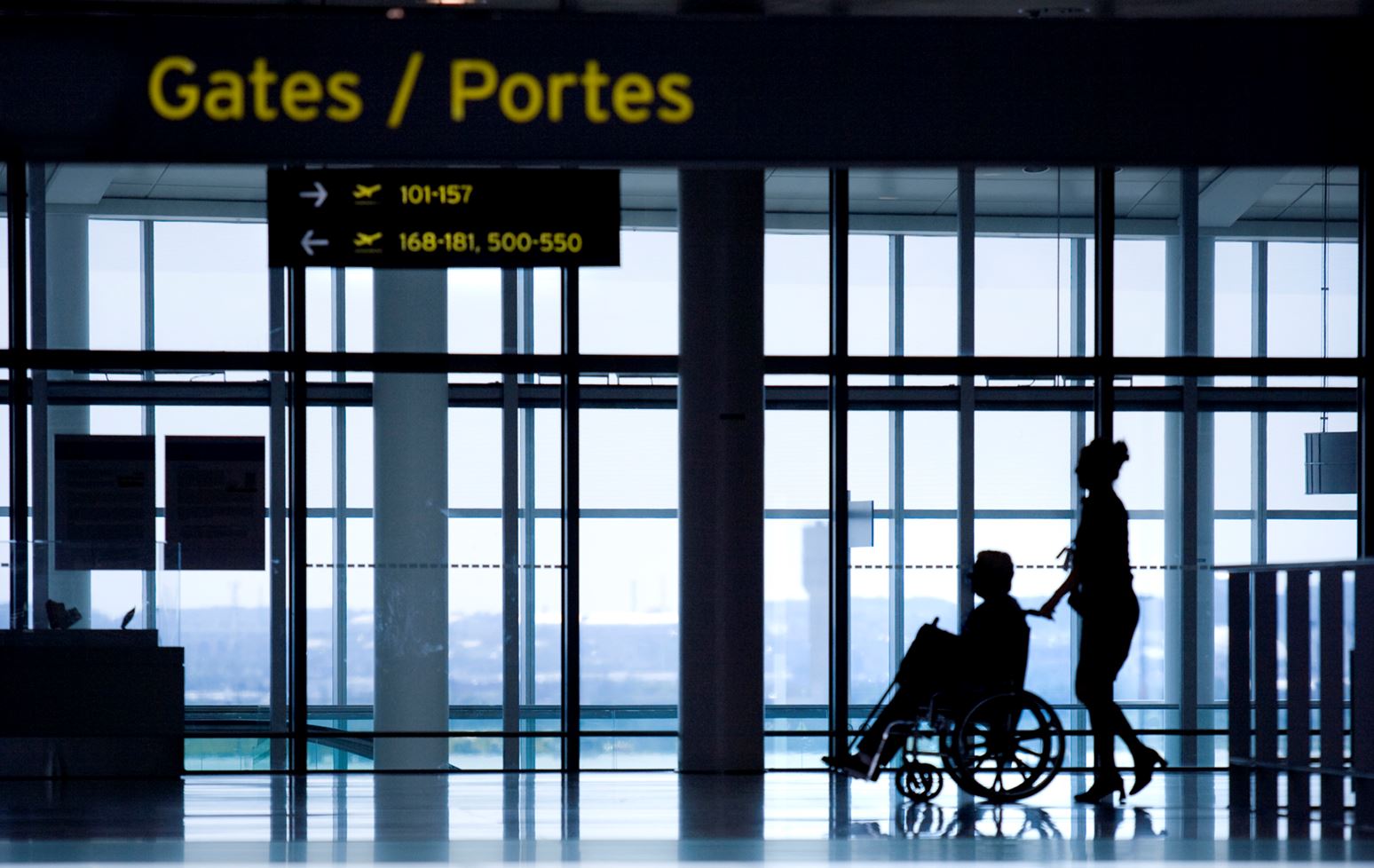Flying can be a stressful and time-consuming process and any issues are often magnified for travellers with special needs. Such travellers might require wheelchairs, electric carts, or airline personnel to help them navigate the airport and board their planes.
A recent study from Associate Professor Mehmet Begen and co-authors from Fraser Health Authority, Sauder School of Business, Boart Longyear, and Strongside Technologies looked at centralization to improve service for air travellers with special needs. The researchers used analytics (building mathematical models and looking at patterns in data) to evaluate whether consolidating such service at all airlines within an airport authority would create improvements and efficiencies. Currently, each airline handles service for special-needs customers separately and sets its own standards and practices. Some airlines even outsource the service to a contractor. Study results showed consolidation provides higher levels of service using fewer resources, including a 24-per-cent reduction in the need for wheelchairs and a 47-per-cent reduction in electric carts.
Related to this story
“Usually, pooling resources leads to efficiencies, but it depends on how you define efficiencies,” said Begen. “Some of the individual airlines might have been doing really efficient stuff on their own. The overall efficiency will increase across the board, but it could be better for some airlines than others.”
Models and data at work
The researchers used two models to try to create a realistic picture of a centralized system:
- Simulation – Using computer software to replicate how special-needs passengers would move through airport security and boarding so they could record data, such as wait times and service levels; and,
- Queuing – A mathematical study used to predict wait times by examining the range of possible scenarios.
They also interviewed personnel at each major airline, as well as staff at Canada Customs and U.S. Customs and Border Protection.
“The biggest challenge was the system we are trying to model doesn’t exist,” he said. “We thought that maybe if we created two different models based on reasonable assumptions and the models gave us more or less the same results, we’d have more confidence that the models mimicked the real world.”
Learning from analytics
Begen said there are three general lessons for business managers:
- It’s important to define your service criteria and ensure they are reasonable and achievable;
- If managed well, centralized systems will usually improve efficiency, but there will always be tradeoffs. In this case, the individual airlines have to give up their control of the service; and,
- Analytics can help to solve business problems, but validation of the analytical models is critical and difficult to do when the system modelled doesn’t exist. Building more than one model and comparing results can improve accuracy.
Savings from centralization
He also said there are many examples in business where some aspects of centralization have improved efficiency. Banks now have a single queue branching off to multiple bank tellers instead of separate lines to each teller. Call centres also use a single queue to handle requests faster.
The researchers made several recommendations to the airport authority. Although these recommendations have not yet been implemented, Begen said he hopes the study will prompt the airport authority to consider improvements.
“The demand for this service is going to increase in the future due to an aging population and as people with special needs participate in society more,” he said. “Services for special needs should be looked at more broadly.”
The paper, “Evaluation of a centralized transportation assistance system for passengers with special needs at a Canadian airport,” is published in a special issue of the International Journal of Shipping and Transport Logistics. It was co-authored by Richard Fung, Senior Operations Engineer at Fraser Health Authority; Daniel Granot and Frieda Granot, both professors at Sauder School of Business; Chris Hall, Regional Contracts and Business Development Manager at Boart Longyear; and Bailey Kluczny, Founder and Principal Consultant with Strongside Technologies.
Begen is working on other scheduling problems for future research projects. He has several other projects related to scheduling. One study – with Ivey Professor (now Emeritus) Peter Bell and John Lyons, Ivey PhD candidate – found the best route for the Whistler-Blackcomb Mega Day Challenge. Another looks at improvements to surgical block schedules at hospitals in the Fraser Health Authority. A third study created an improved schedule for an automobile manufacturing plant and won an award.


